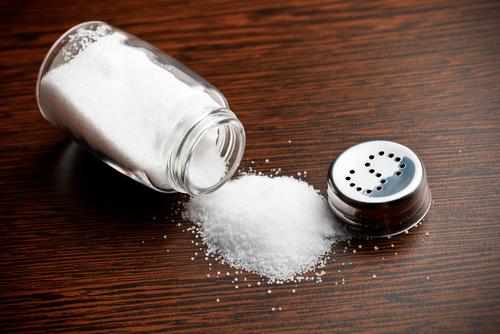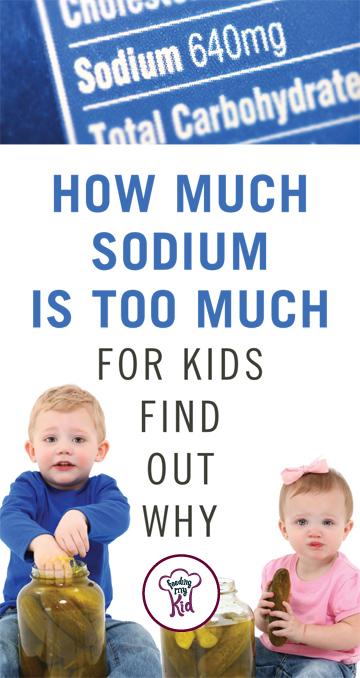 You can be giving your baby or child too much sodium and not even know it! How? Processed foods like canned soups, mac and cheese, pasta sauce, sausages, and restaurant foods are your main contributors to a child’s sodium intake. It’s very easy to go over the amount of recommended daily sodium intake.
You can be giving your baby or child too much sodium and not even know it! How? Processed foods like canned soups, mac and cheese, pasta sauce, sausages, and restaurant foods are your main contributors to a child’s sodium intake. It’s very easy to go over the amount of recommended daily sodium intake.
What’s the Harm with Too Much Sodium?
When children and adolescents sodium intake exceeds the recommended daily allowance, it can lead to high blood pressure, which is a risk factor for heart disease and strokes among adults. It’s hard to think that what our children eat as kids can affect them so much as adults.
We tend to think of childhood as a get out of jail free card when it comes to eating. I know I didn’t worry about health stuff until my mid-30’s when things started to go wrong in my body.
According to the National Center for Chronic Disease Prevention and Health Promotion, if we can help keep our children’s blood pressure lower as kids then this can help them lower their risk of high blood pressure as adults.
Check Out These Other Great Resources:
- Pan-Seared Honey Mustard Salmon. A Protein Packed Meal!
- Get Your Picky Eater to Eat Healthier. Professional Advice from a Registered Dietitian
- How to Find the Unhealthy Hidden Ingredients in Food Labels. Everything You Need to Know.
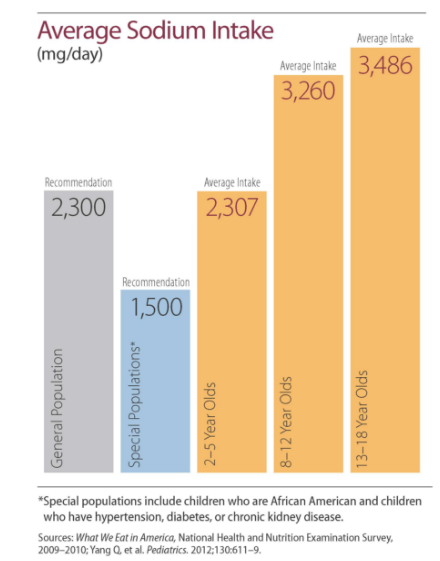
What Is The Recommended Daily Sodium Intake?
The recommended daily sodium intake should be less than 1,500 milligrams per day. The less the better when it comes to sodium. And for children 0-2 years old the recommendation is to avoid sodium or adhere to less than 1,000 milligrams a day.
Here is how much sodium most children are having in a single day, according to a survey by the National Health Nutrition Examination Study.
- 2-5 year-olds: 2,307 mg/day or less a day
- 8-12 year-olds: 3,260 mg/day or less a day
- 13-18 year-olds: 3,458 mg/day or less a day
Sodium Risks for Babies
Salt does add a nice flavor to foods, however, there are some strong reasons not to add salt to the foods you make for your baby or toddler. Check out this article that shows that most 8-month-old babies are taking in too much sodium.
- A baby’s kidneys can’t metabolize more than .4g or (400 milligrams) of sodium a day. That’s a really small amount and it’s challenging to figure out how much salt was added to the food versus how much was eaten and how much ended up on his or her face.
- For toddlers (ages 1-3), aim to give them 1,000 – 1,500 milligrams of sodium or less.
- For kids ages 3-8, aim to give them less than 1,900 milligrams or less.
- You want your child to learn to love the taste of savory vegetables without the flavor of salt. Otherwise, she may get used to it and later in life will salt her foods. Studies show that over time too much sodium is not healthy for a variety of reasons.
- The taste for salt is acquired and learned over time. You are helping to teach your child lifelong habits and those start so early.
How to Lower Your Child’s Daily Sodium Intake
Almost all the salt a child eats comes from:
- Restaurants
- Fast food
- Processed foods
If your child is older or a teen, don’t worry too much about the salt you add to your meals at home unless you are overdoing it. If you are overdoing it at home, it is probably a good idea for you to reduce how much salt you’re adding to your food. The less salt you eat, the less you’ll crave. This goes for everyone in the family.
Here Are Some Easy Ways To Pull Back On Sodium In Your Home:
- Don’t salt your pasta water
- Look for sauces and ketchup low in sodium or sodium-free
- Don’t salt your food while cooking and let each individual person salt their meal
- Remove a portion of each meal to give to your child and do not salt it. Then you can salt the remainder of the food for everyone else if needed.
- Avoid processed food high in sodium
Restaurants and Processed Foods Are the Biggest Contributors to a Person’s Sodium Intake
An estimated 80% of the sodium Americans consume is added by food manufacturers or restaurants, according to research published in JAMA Internal Medicine. The CDC reports that Americans now eat 75% of their meals away from home. Those are some incredibly high numbers and that’s a great opportunity to overdo it with sodium intake.
Too much sodium isn’t the only culprit when it comes restaurants and processed foods, another is sugar. Almost 74% of all processed foods have added sugar. Watch this video to learn more.
Here Are the Top 10 High Sodium Foods for 2-19 Year-Olds:
Check out the list to find the top 10 high in sodium foods. You might be surprised. Next time you go shopping, make sure you look at the labels.
Start buying brands that have less sodium. Read the nutrition labels to find the best ones and don’t just go off what the front of the package says; it can be misleading.
Read Nutrition Labels
Make sure you bookmark this page, How to Read Nutrition Labels for more info on what to look for when reading nutrition
- Pizza
- Bread and Rolls
- Poultry
- Cold cuts and cured meats
- Sandwiches
- Savory snacks
- Soups
- Cheeses
- Mixed pasta dishes
- Frankfurters and sausages
Reduce How Much You Eat Out
We all have such busy lives! It can be challenging to make more meals at home. On our website, we have hundreds of recipes to help make mealtime easier on you. Check out our meal planning guide to help. Eating out regularly just isn’t as healthy as cooking at home. For your child’s long-term health, try to make more food at home and skip the processed stuff like boxed mac and cheese, chicken nuggets to control your child’s daily sodium intake.
Check out our video on why you should cook with your kids.
Other Ideas On How to Consume Less Sodium Infographic
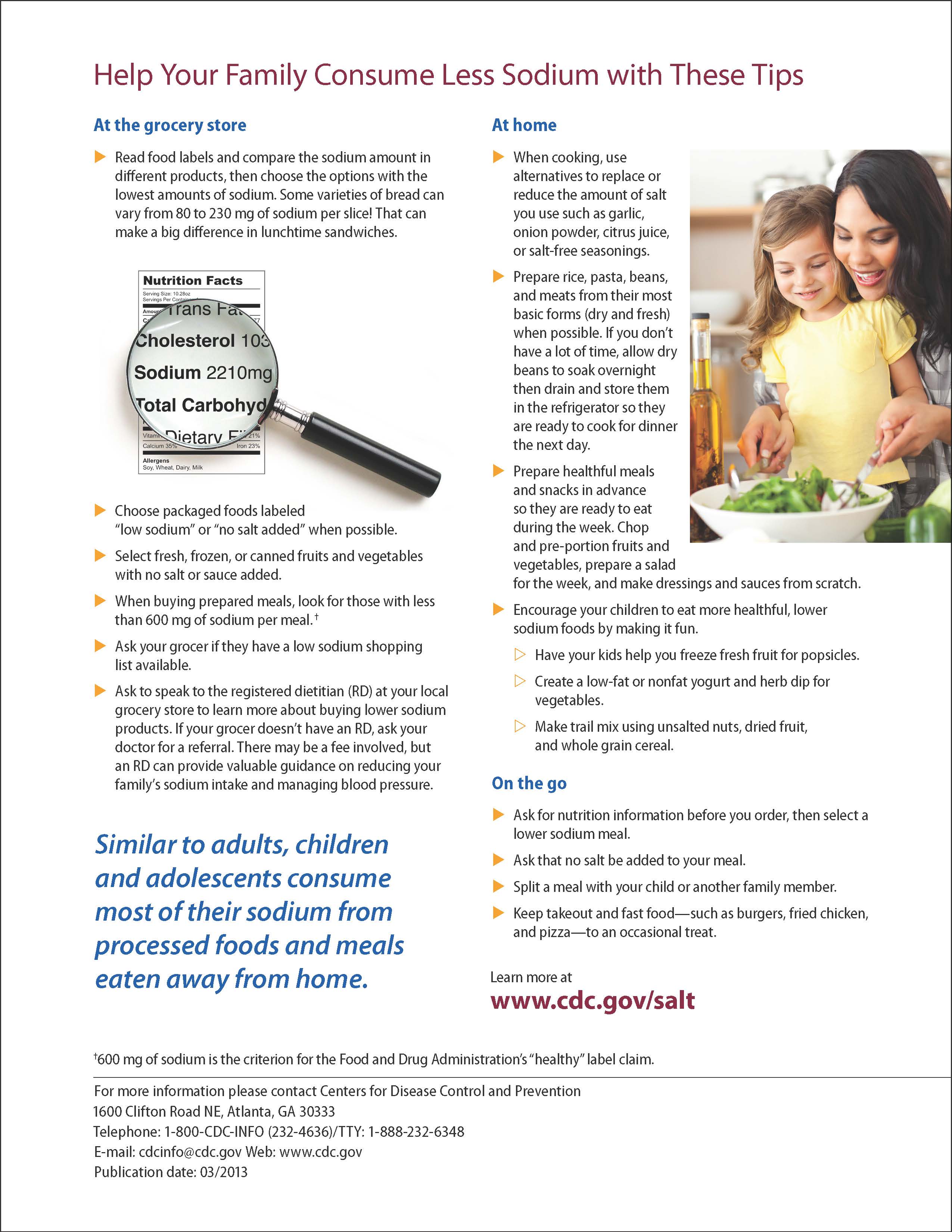
High Sodium Intake in Children and Adolescents is a Cause for Concern Infographic
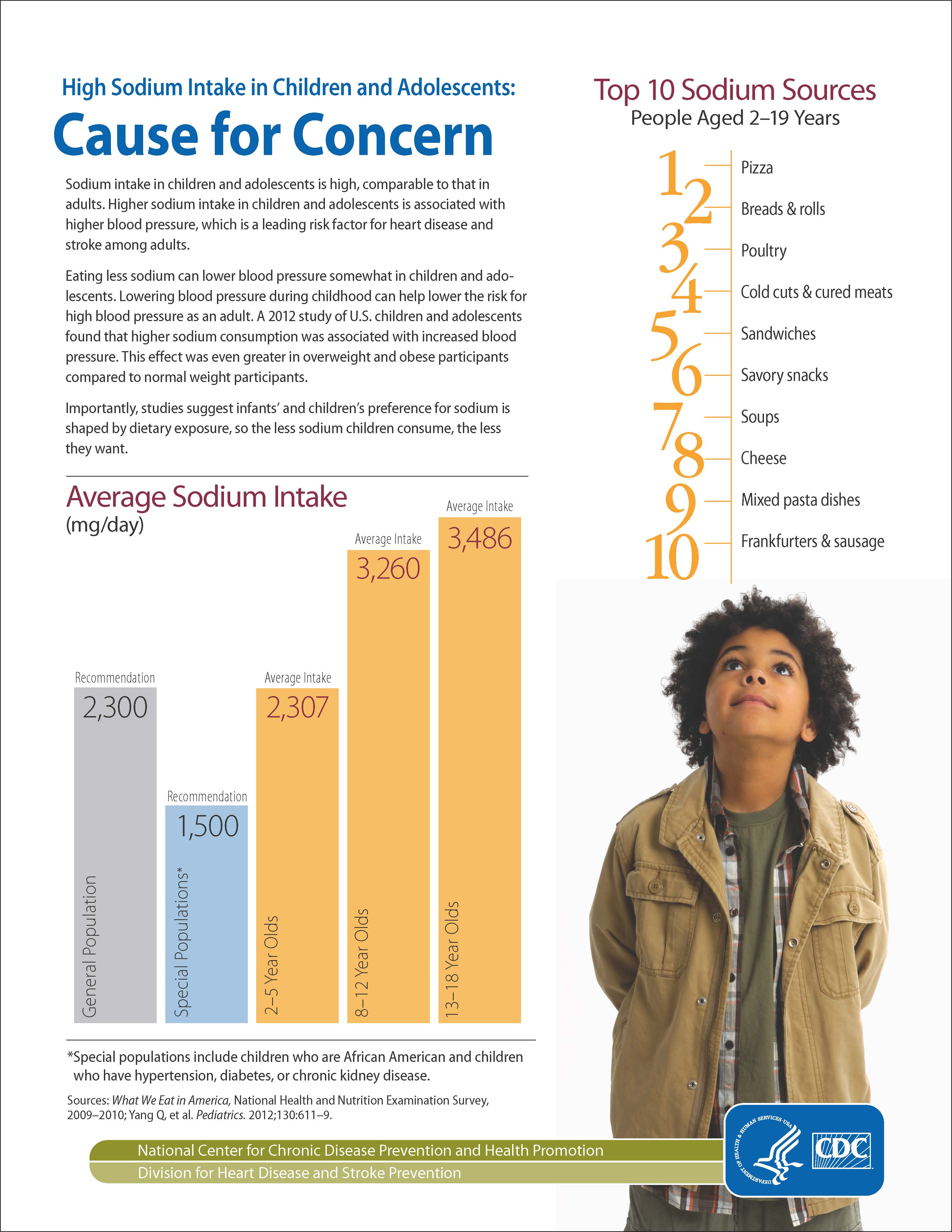
Hidden Salt in Food
Share your experiences and comments below.


